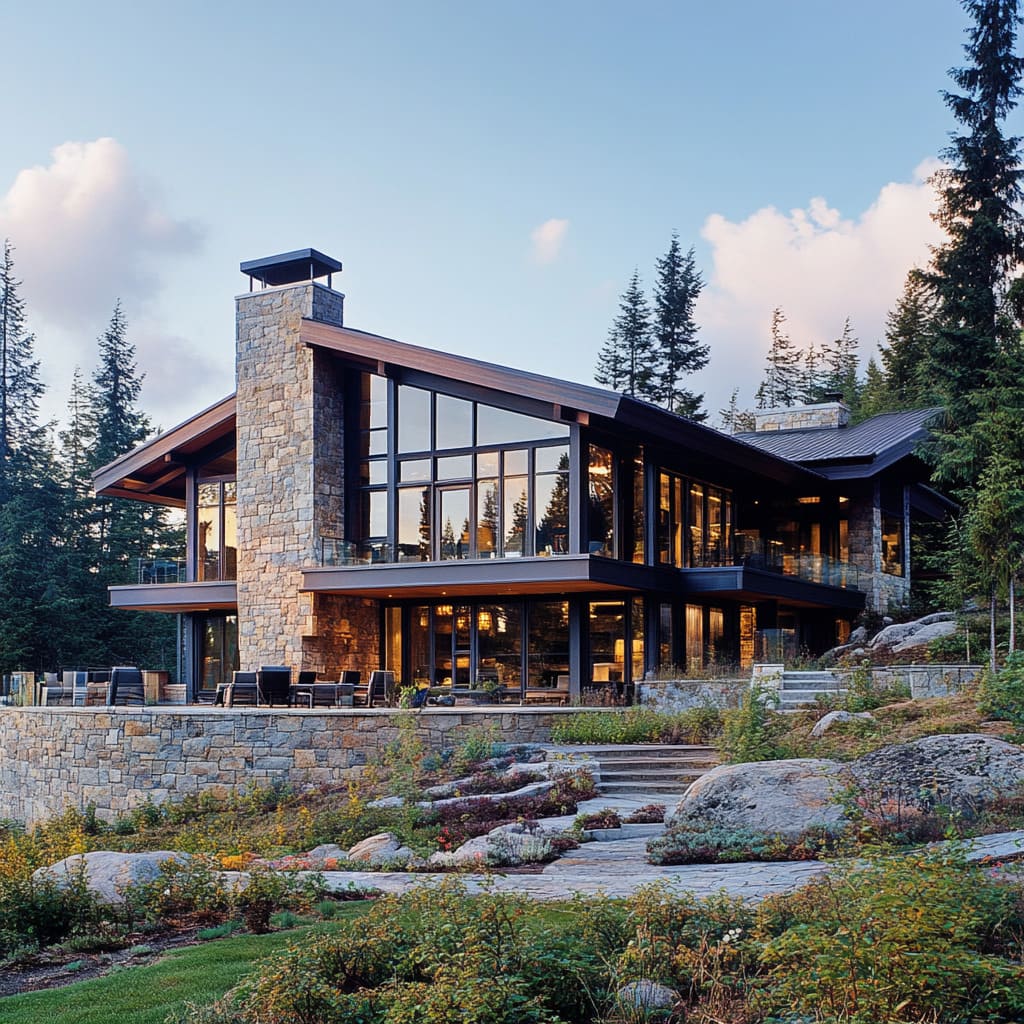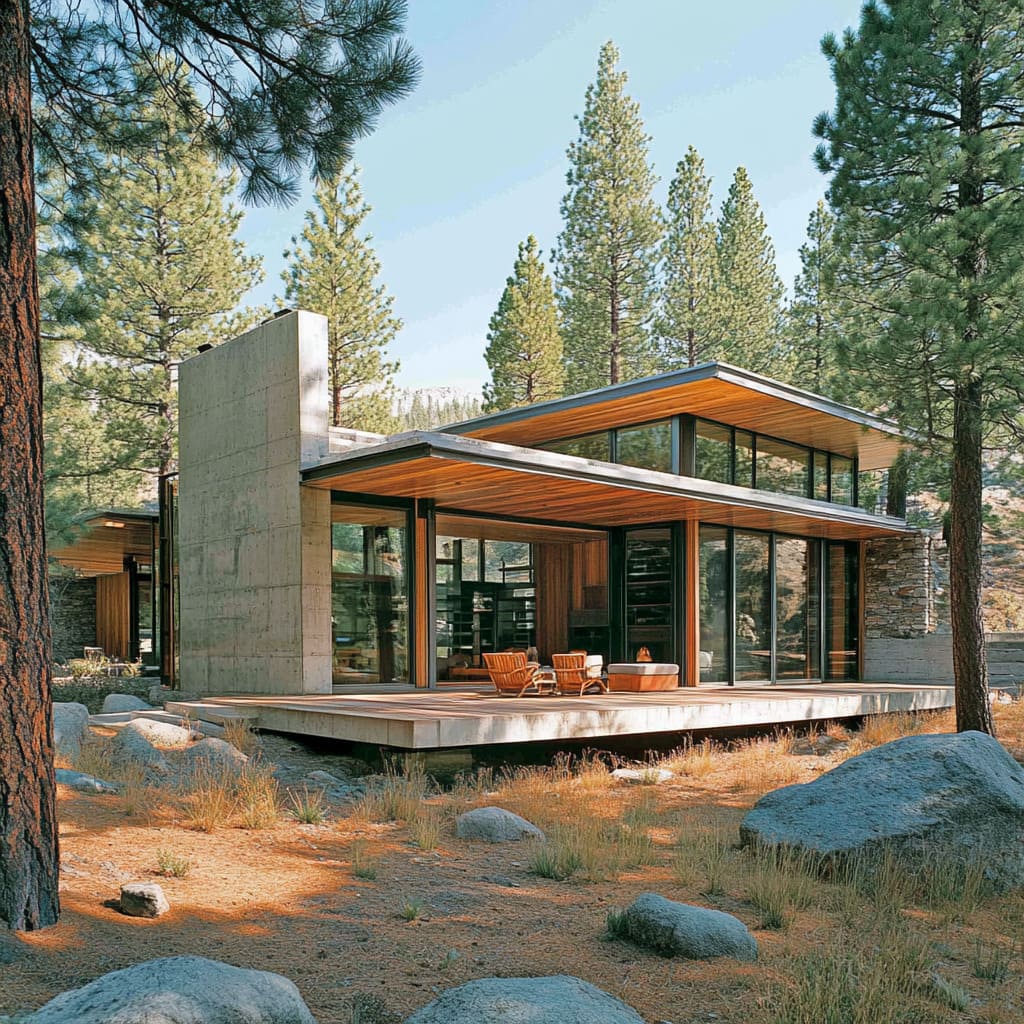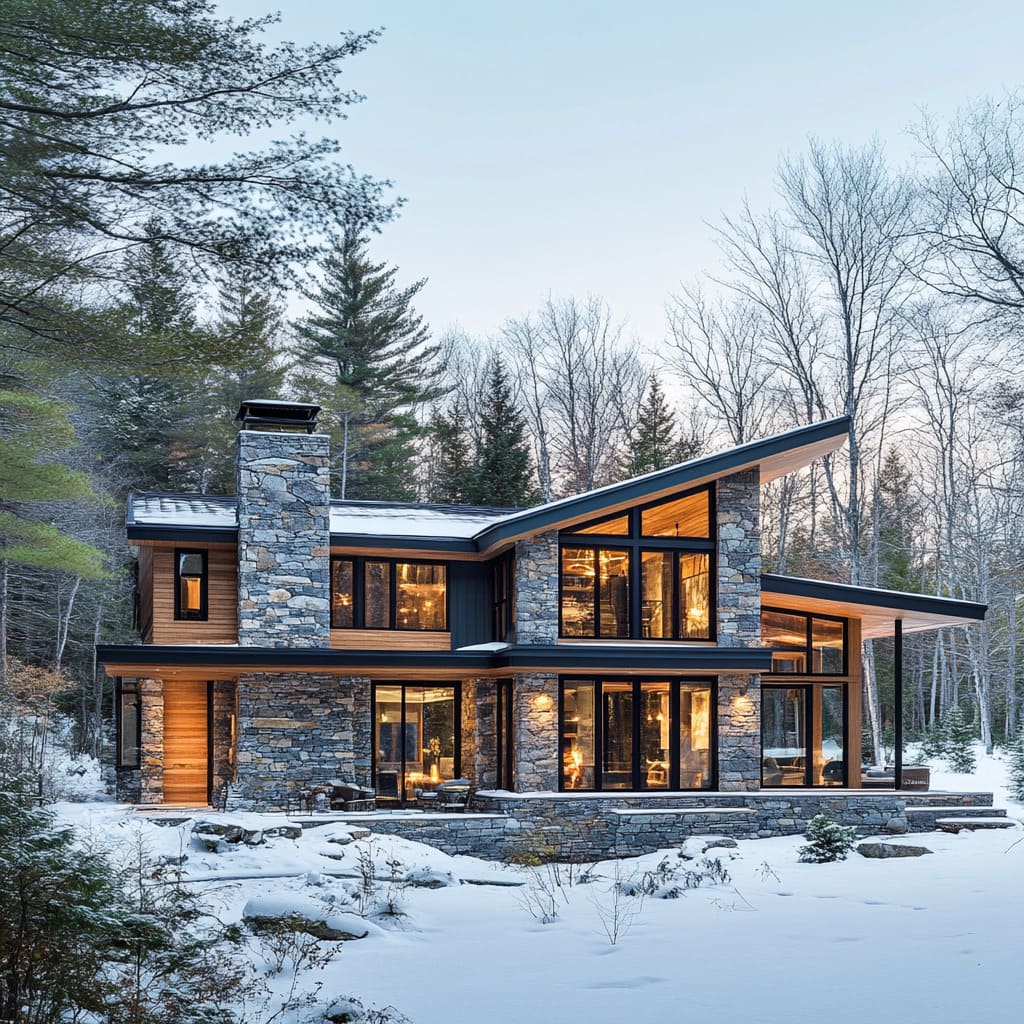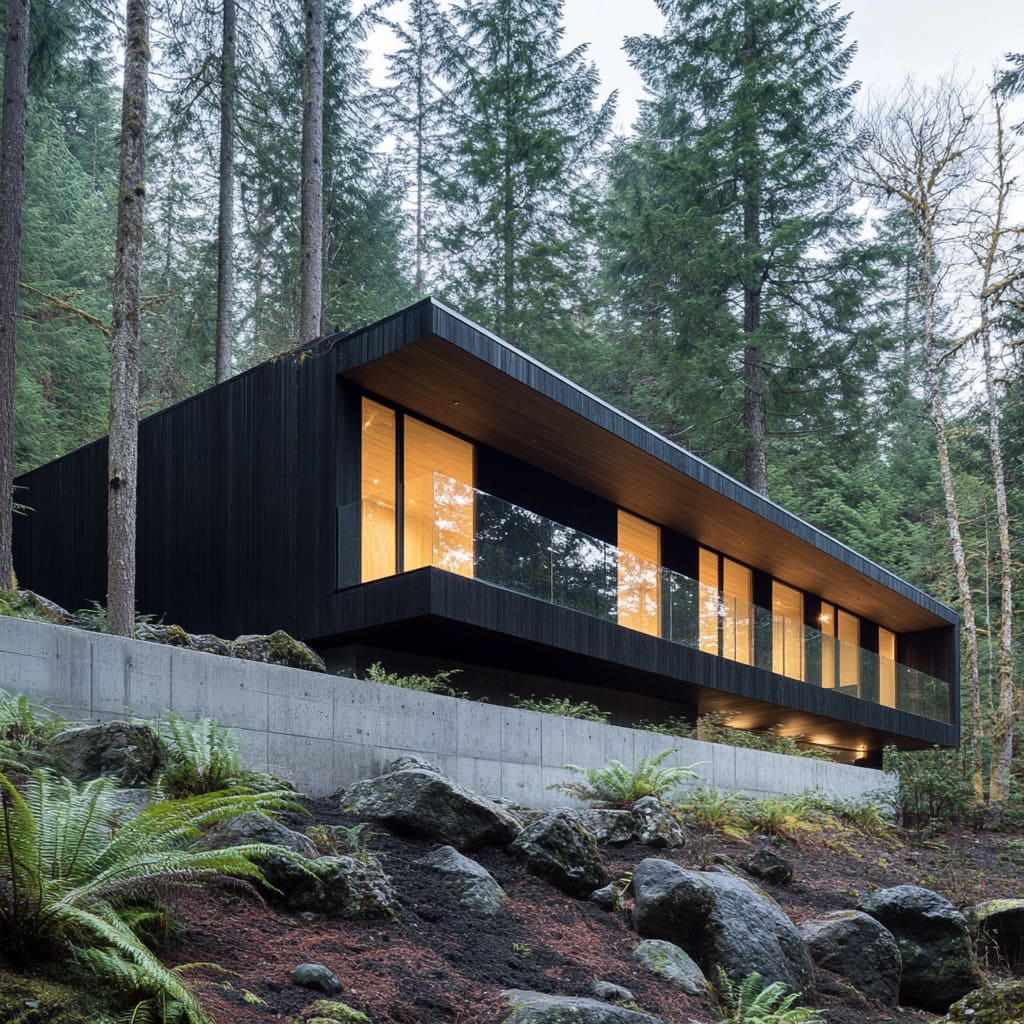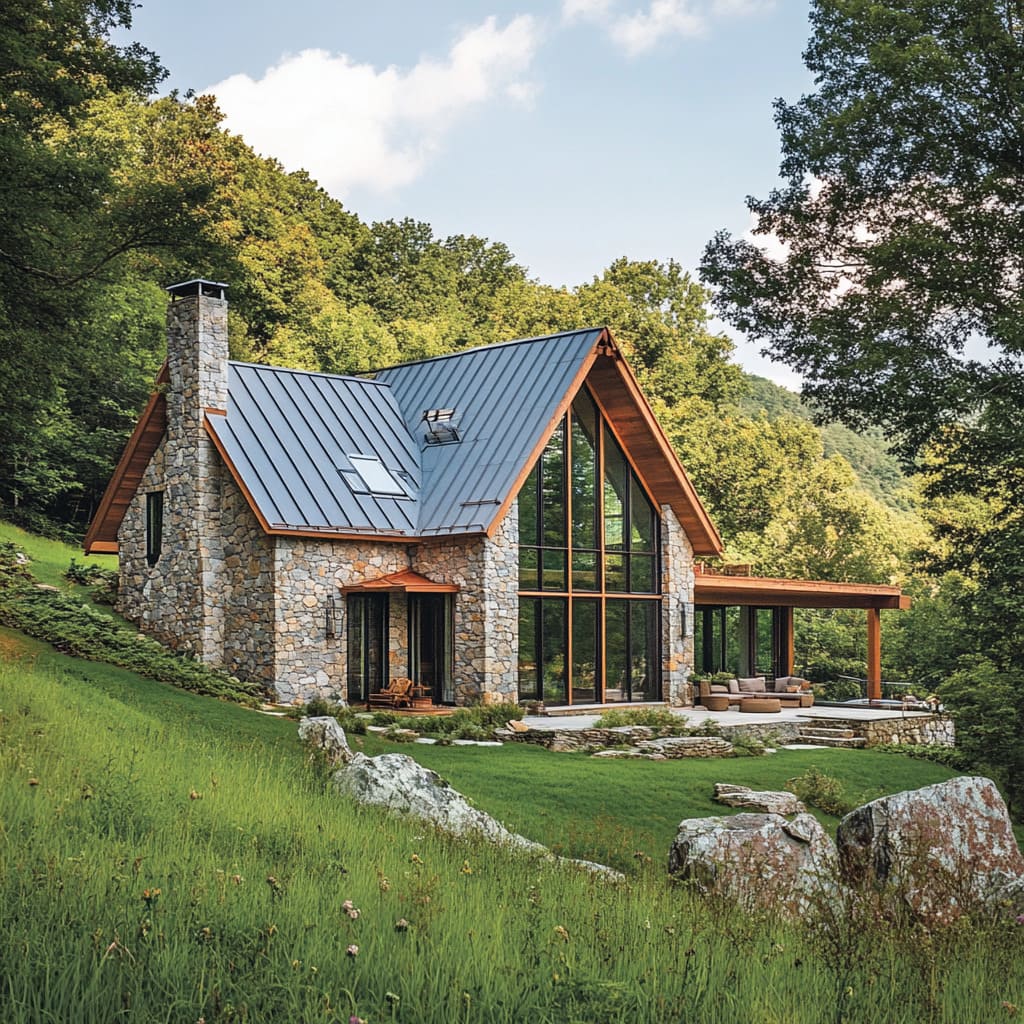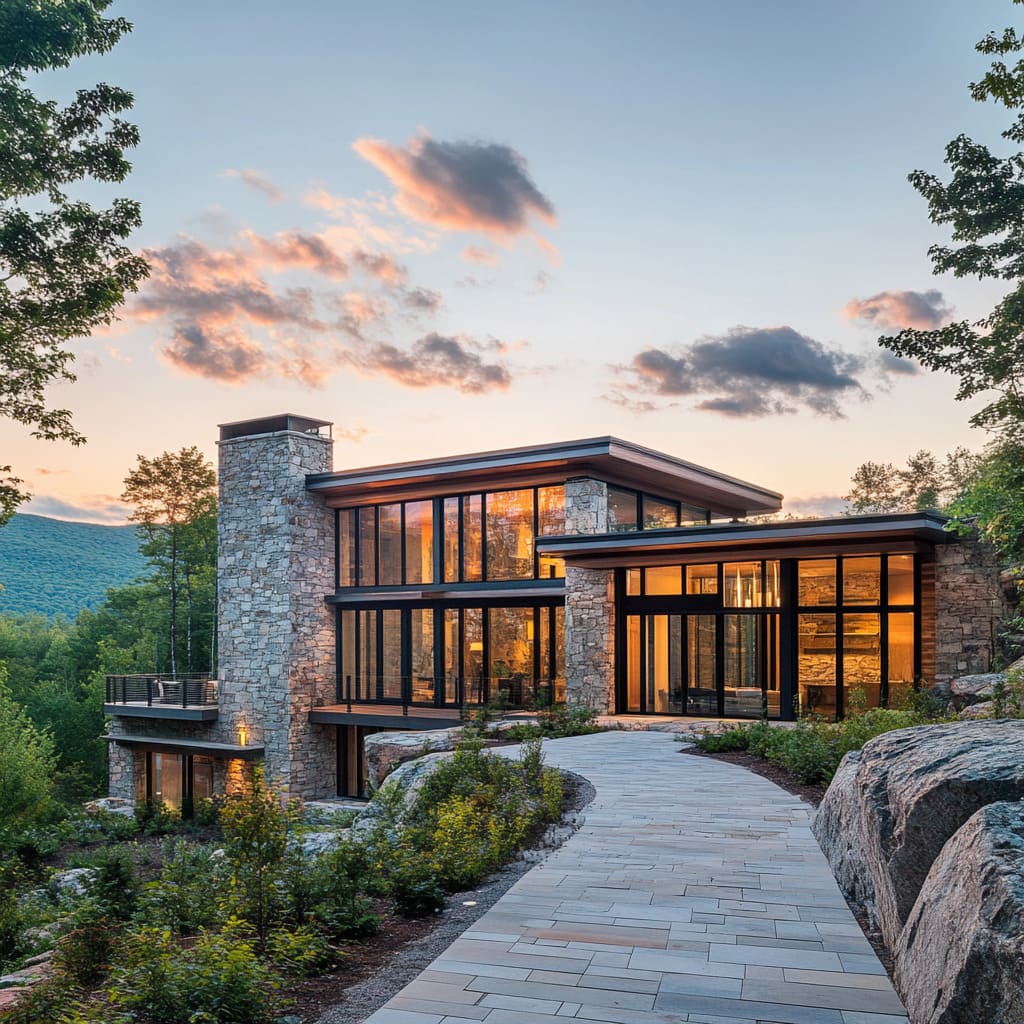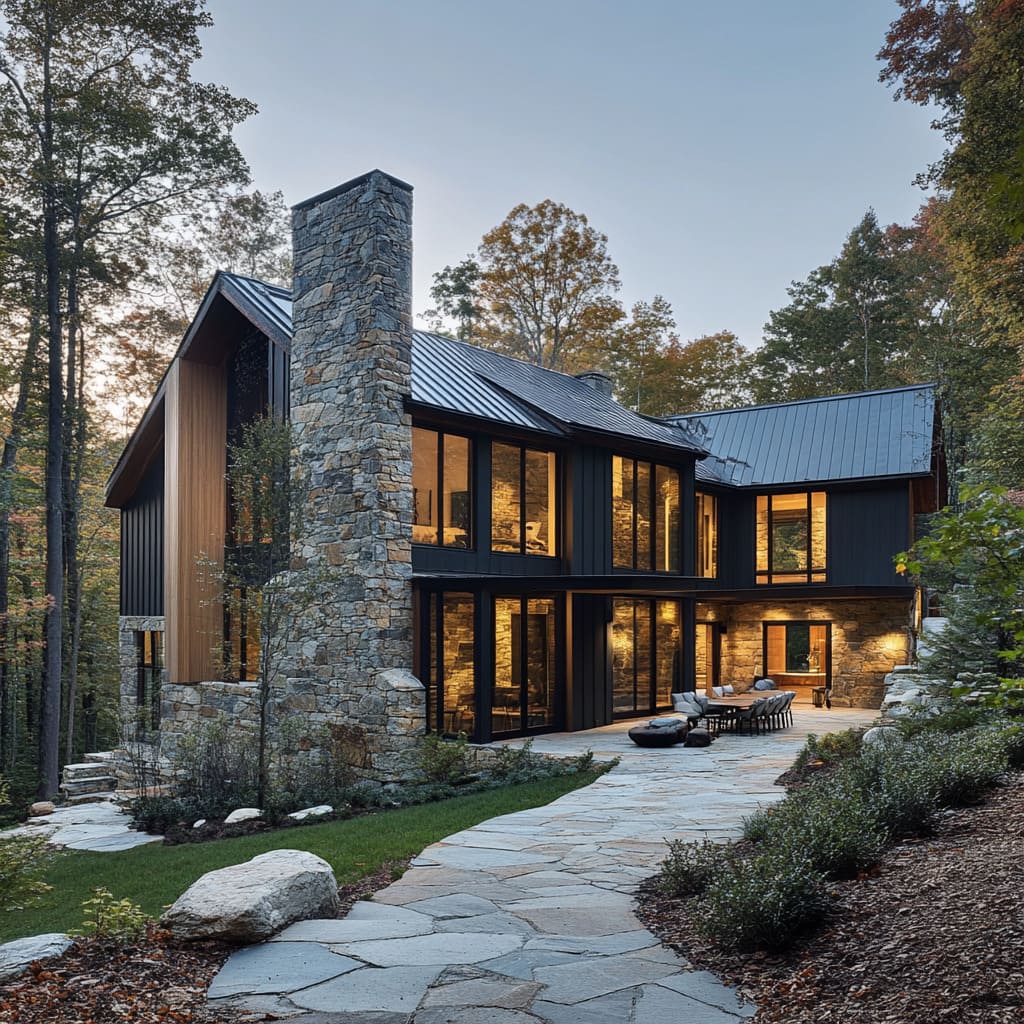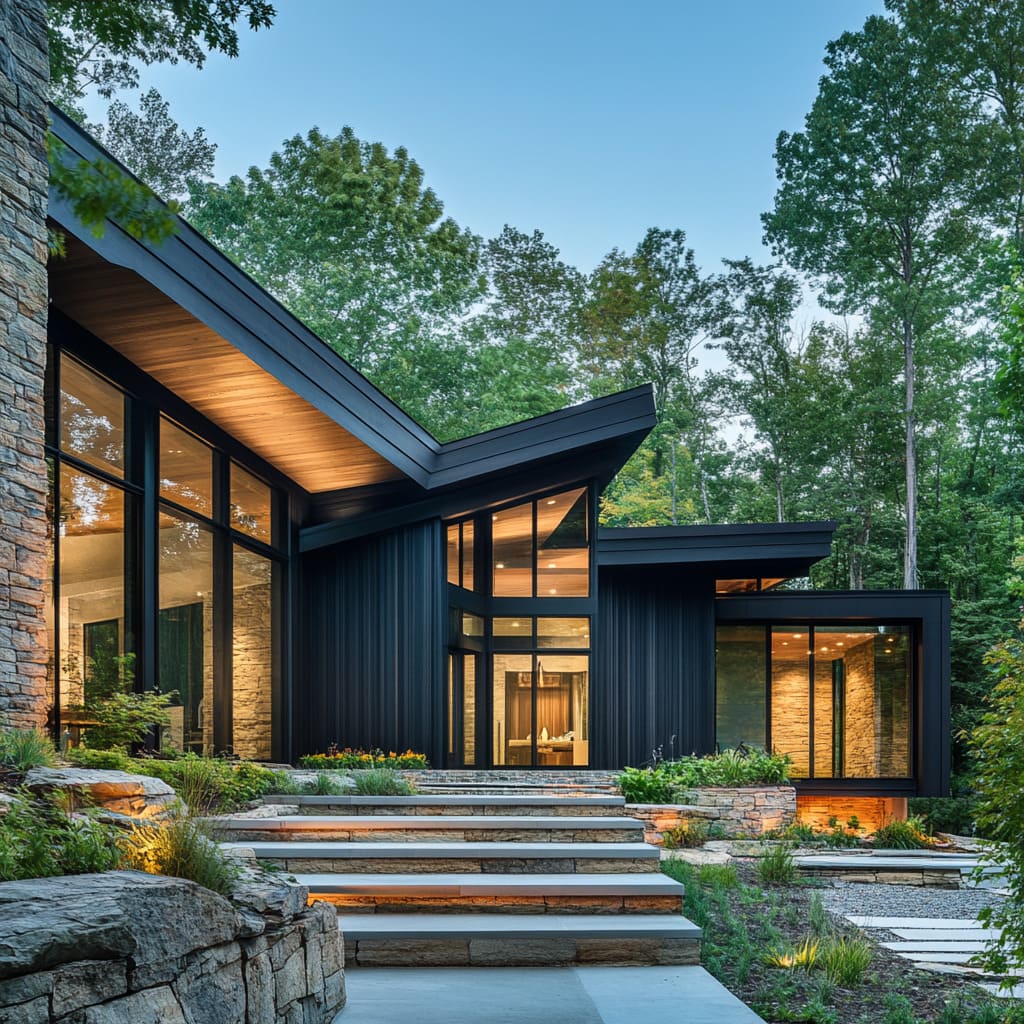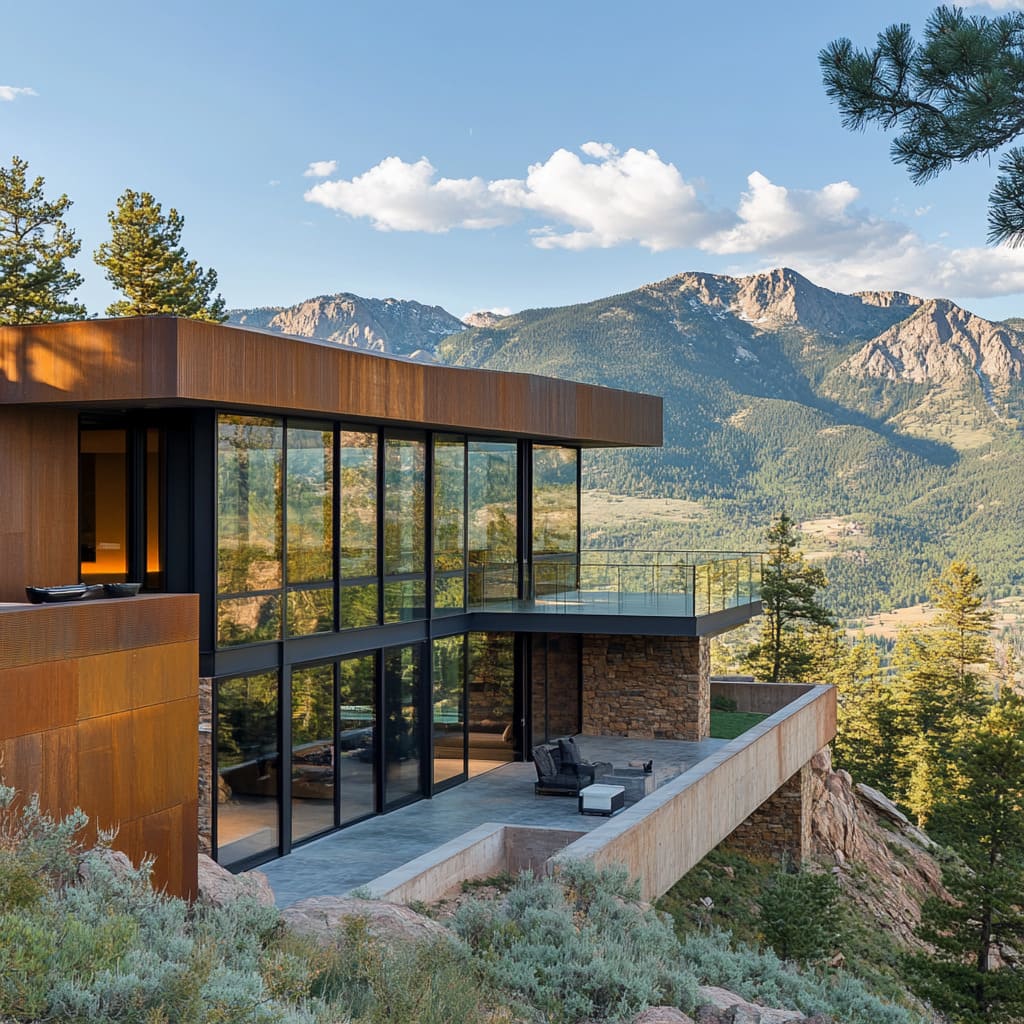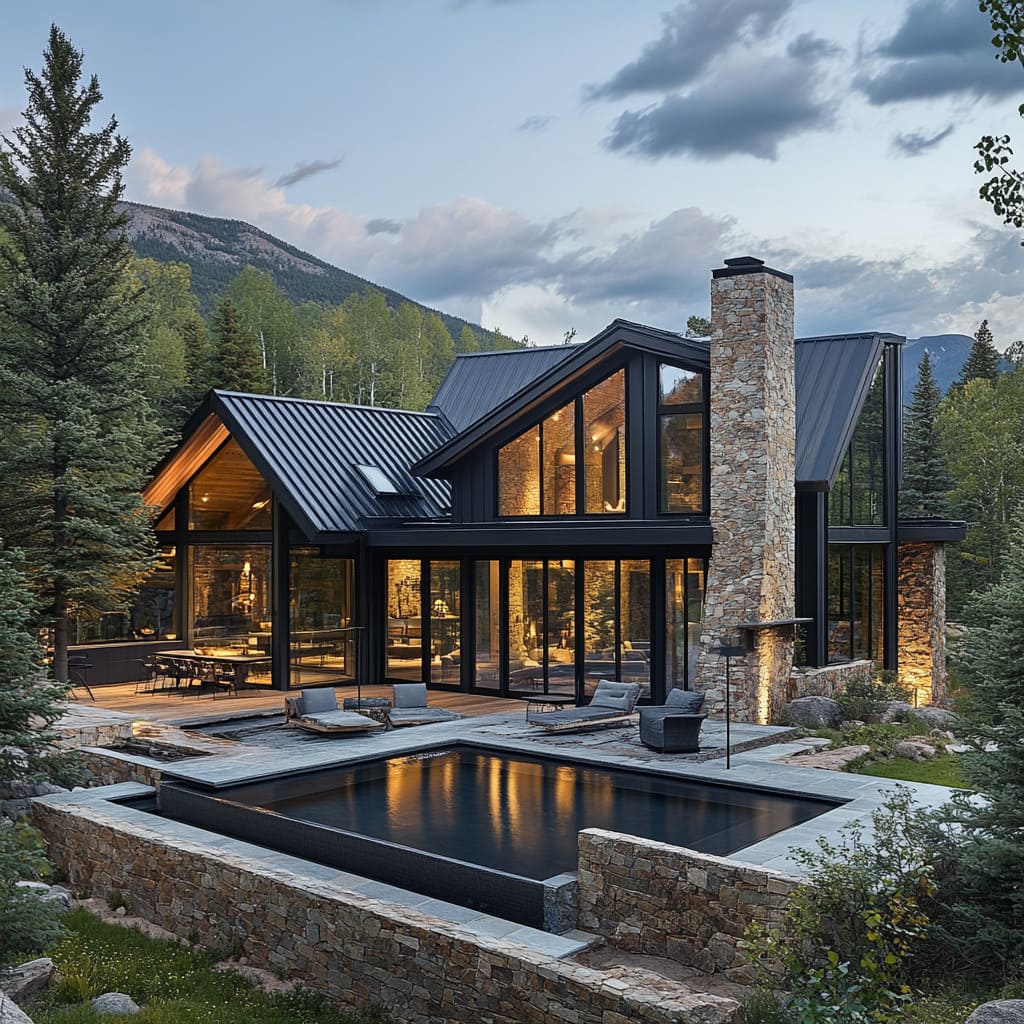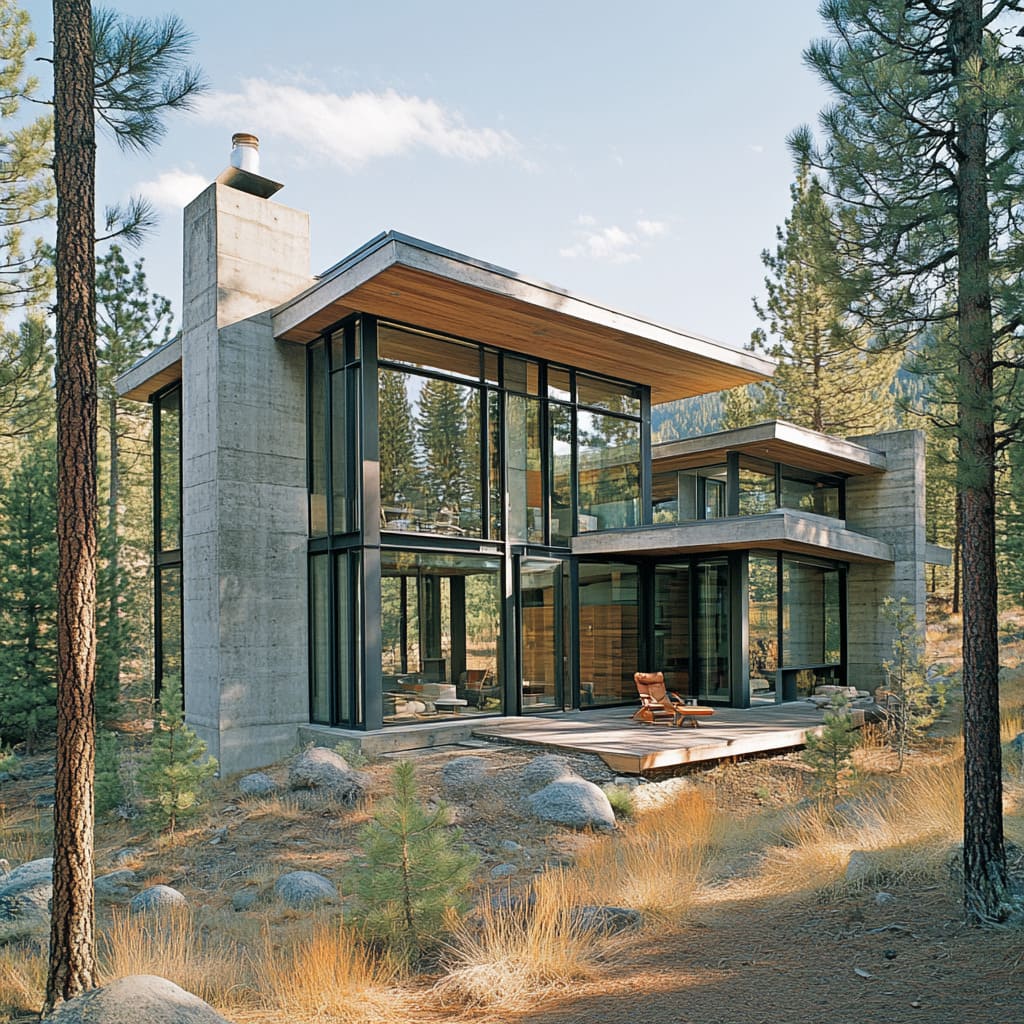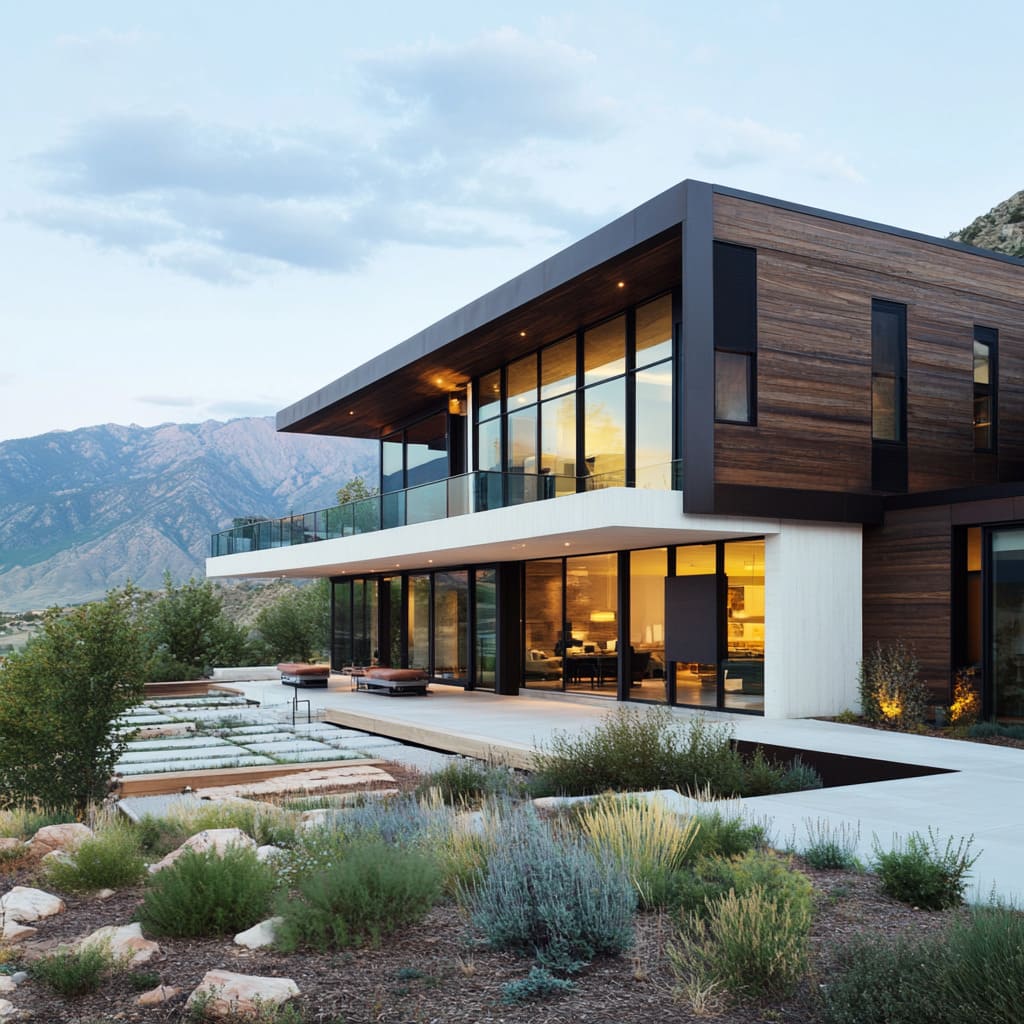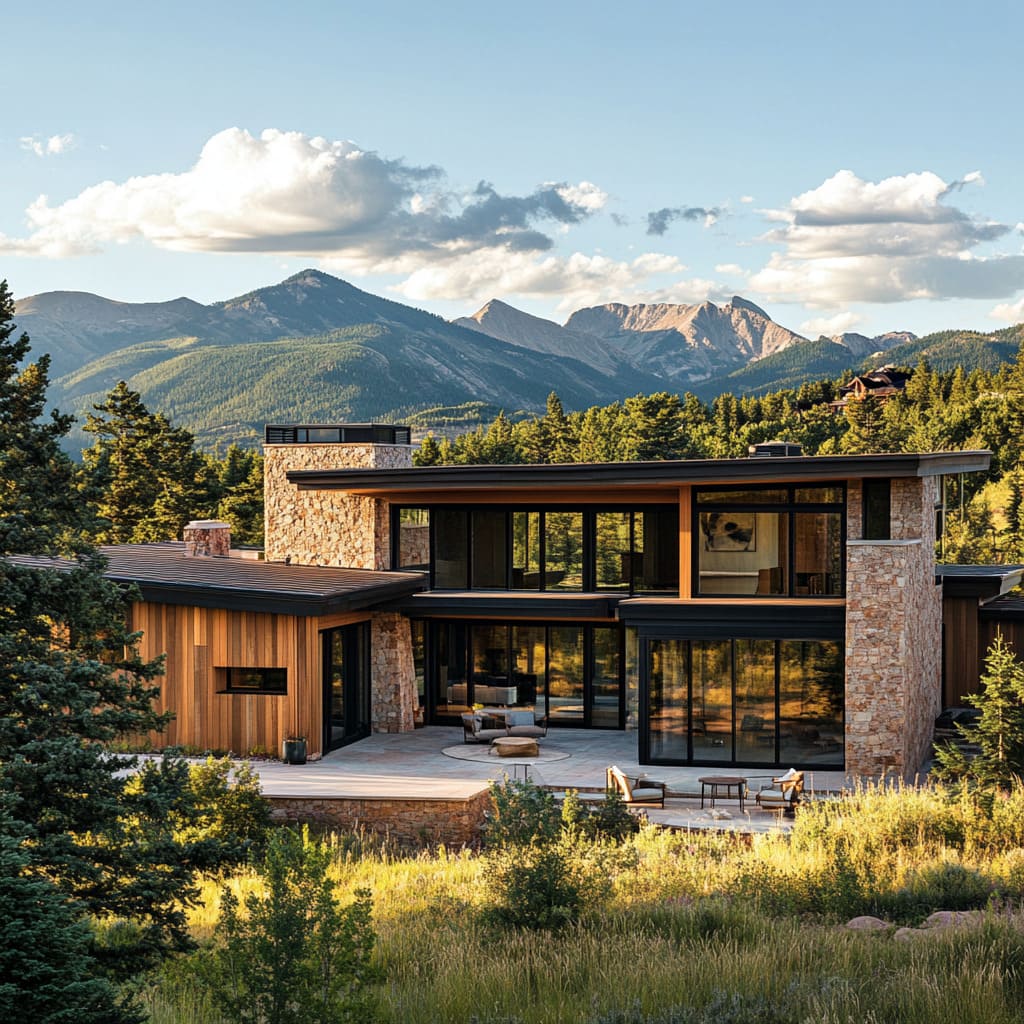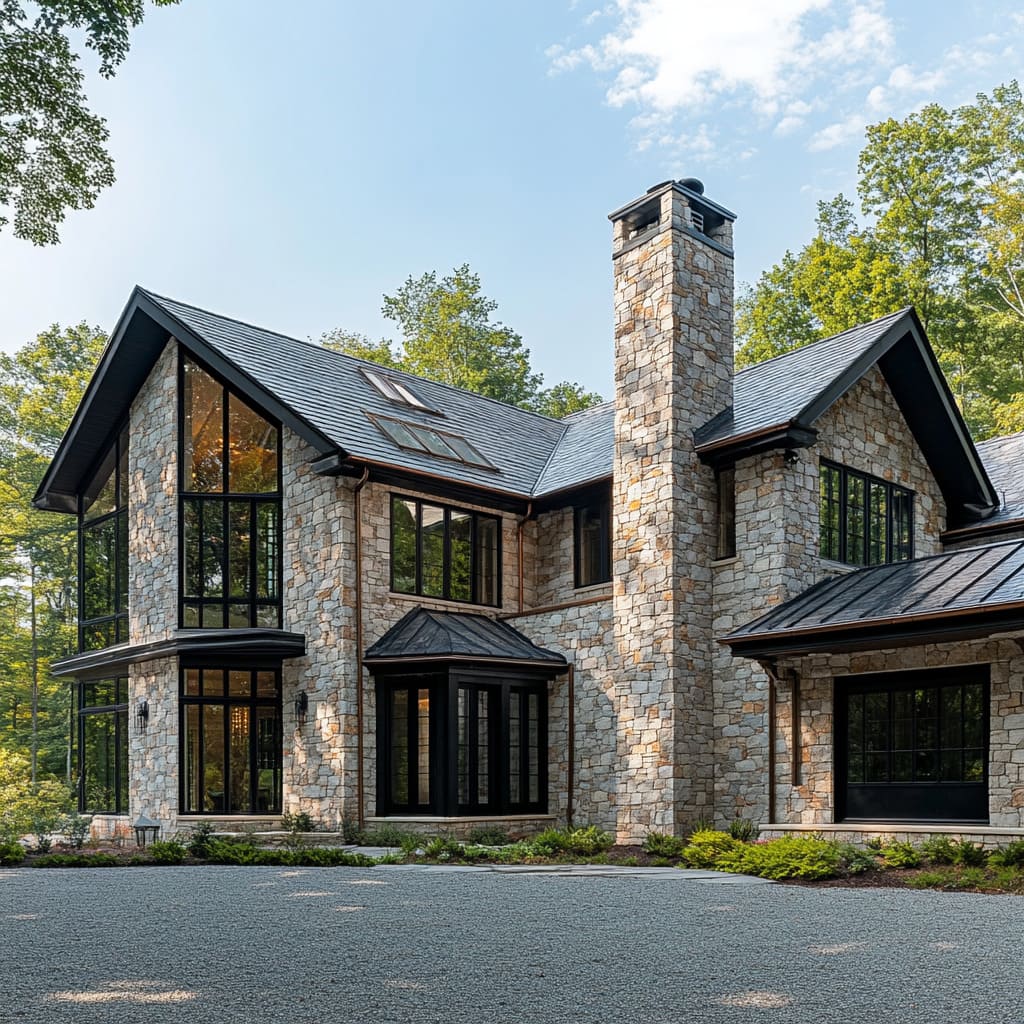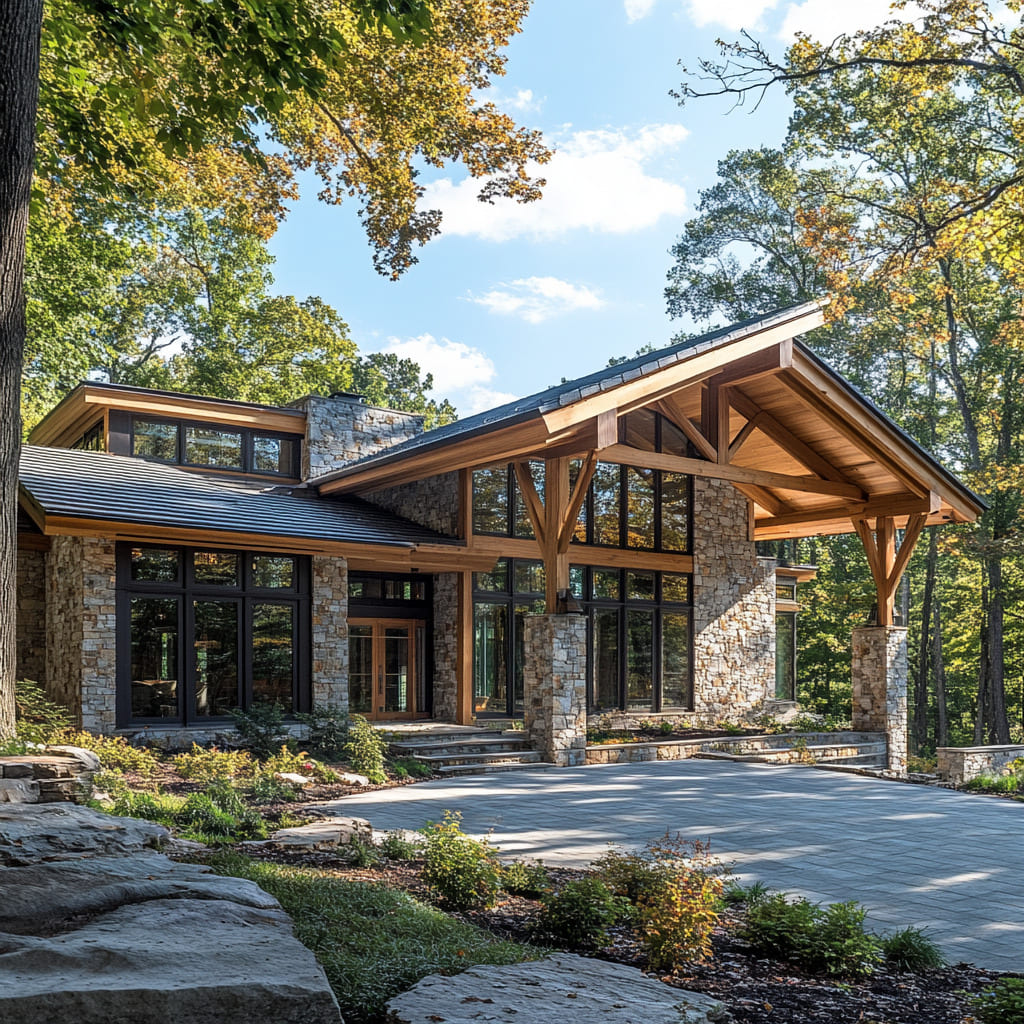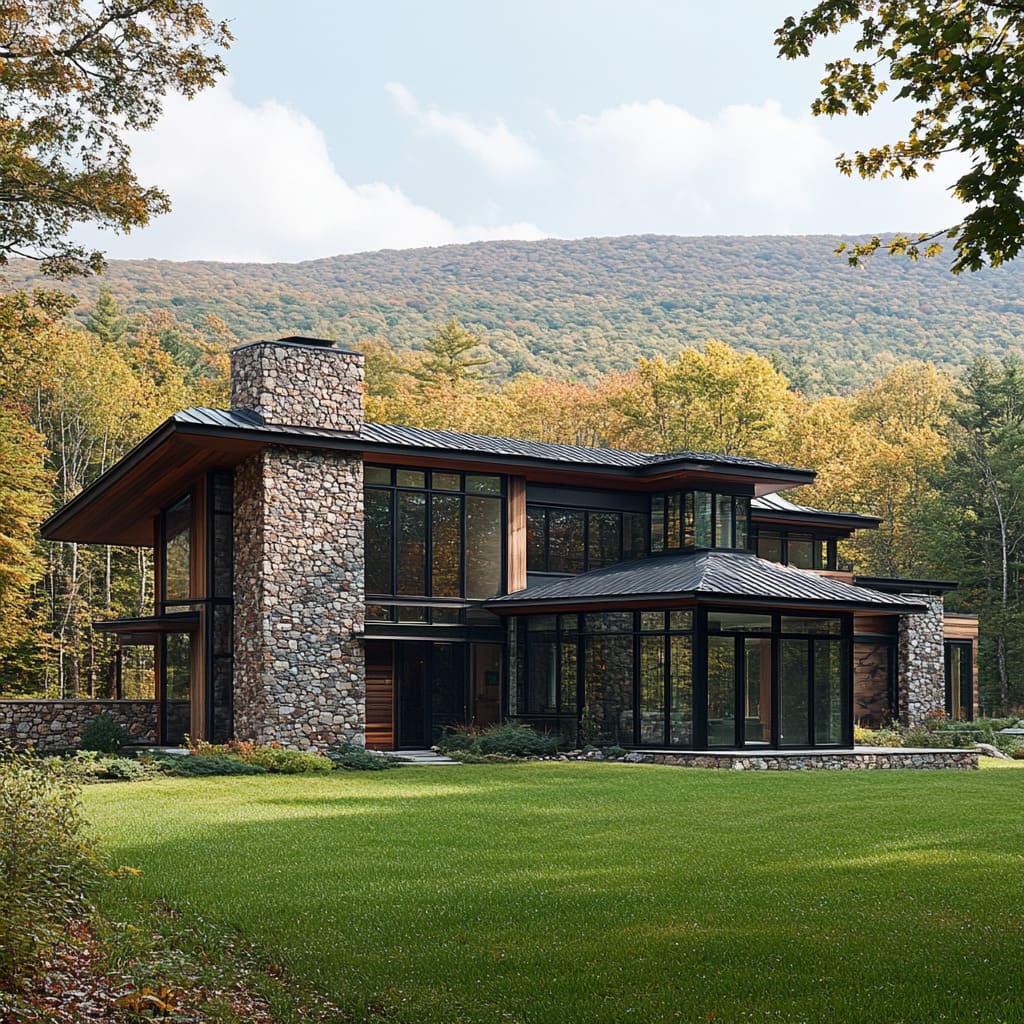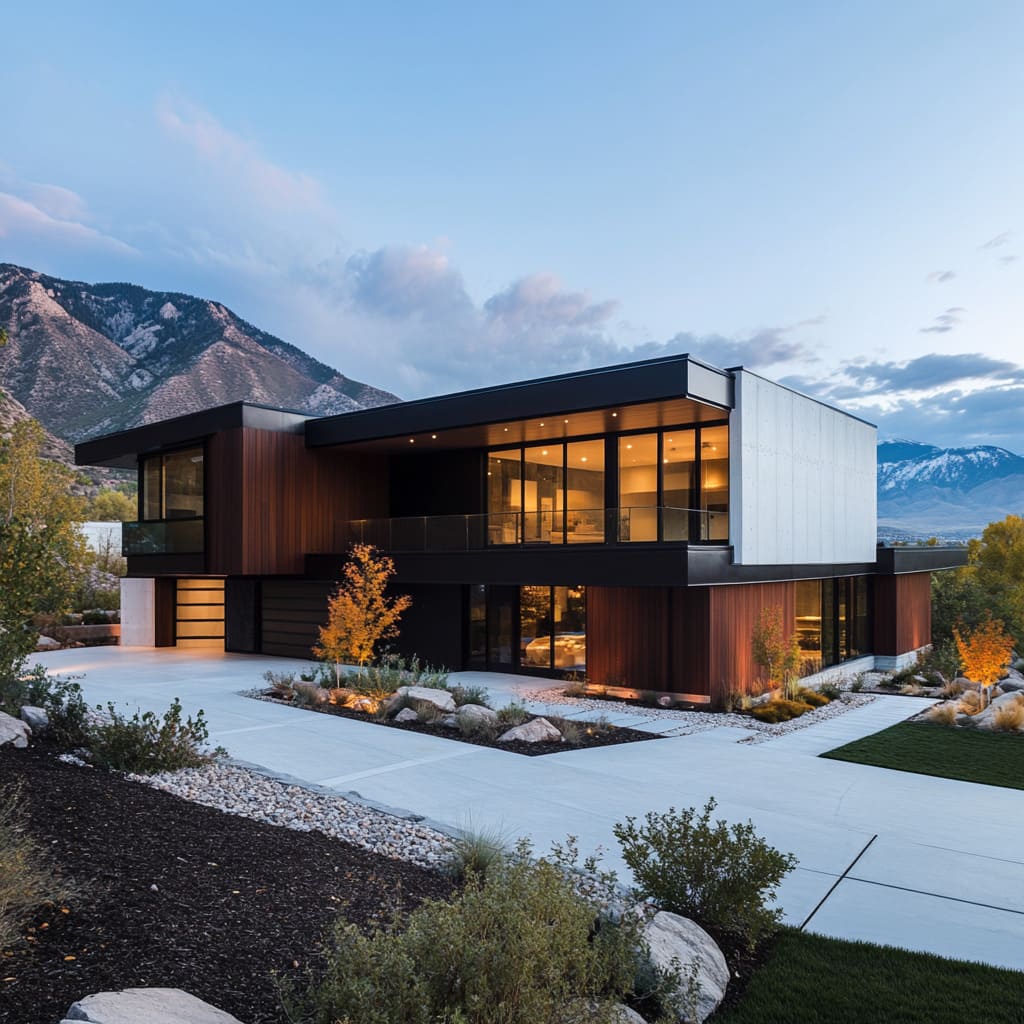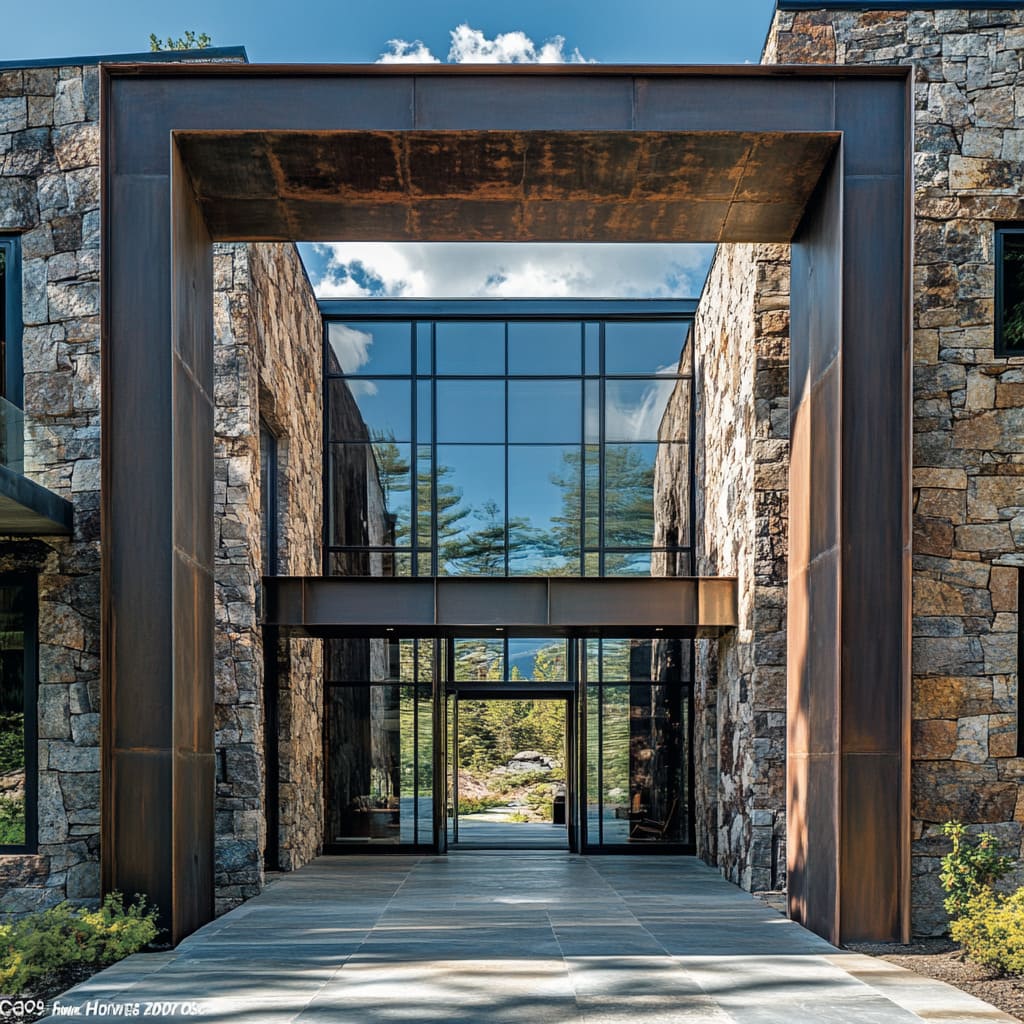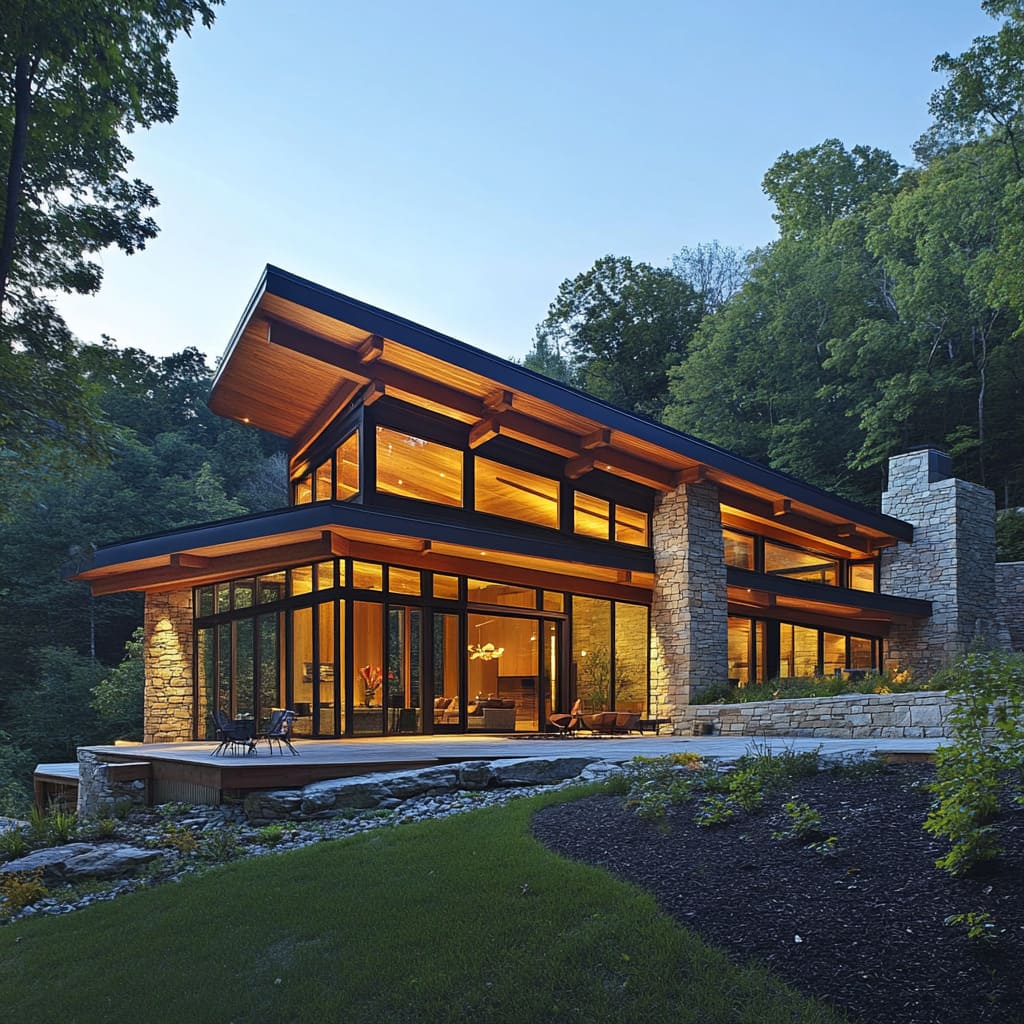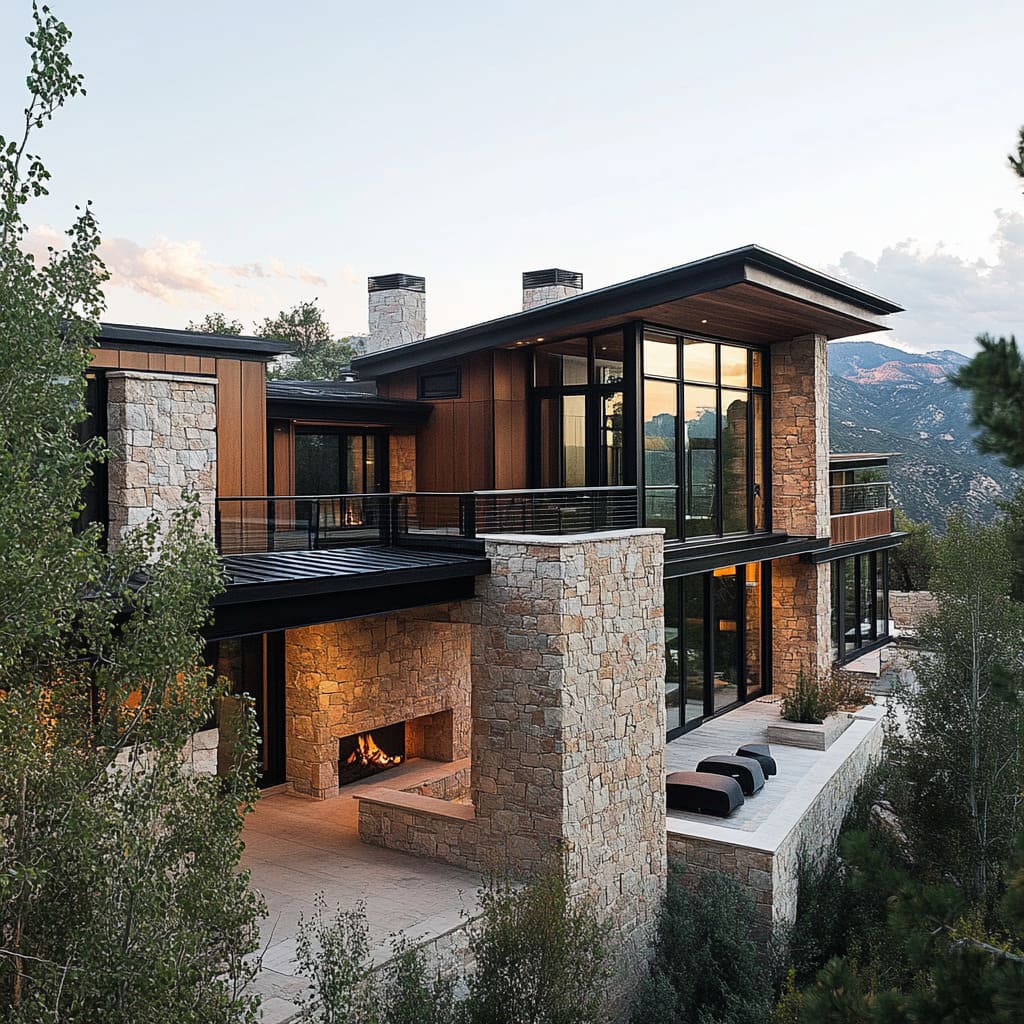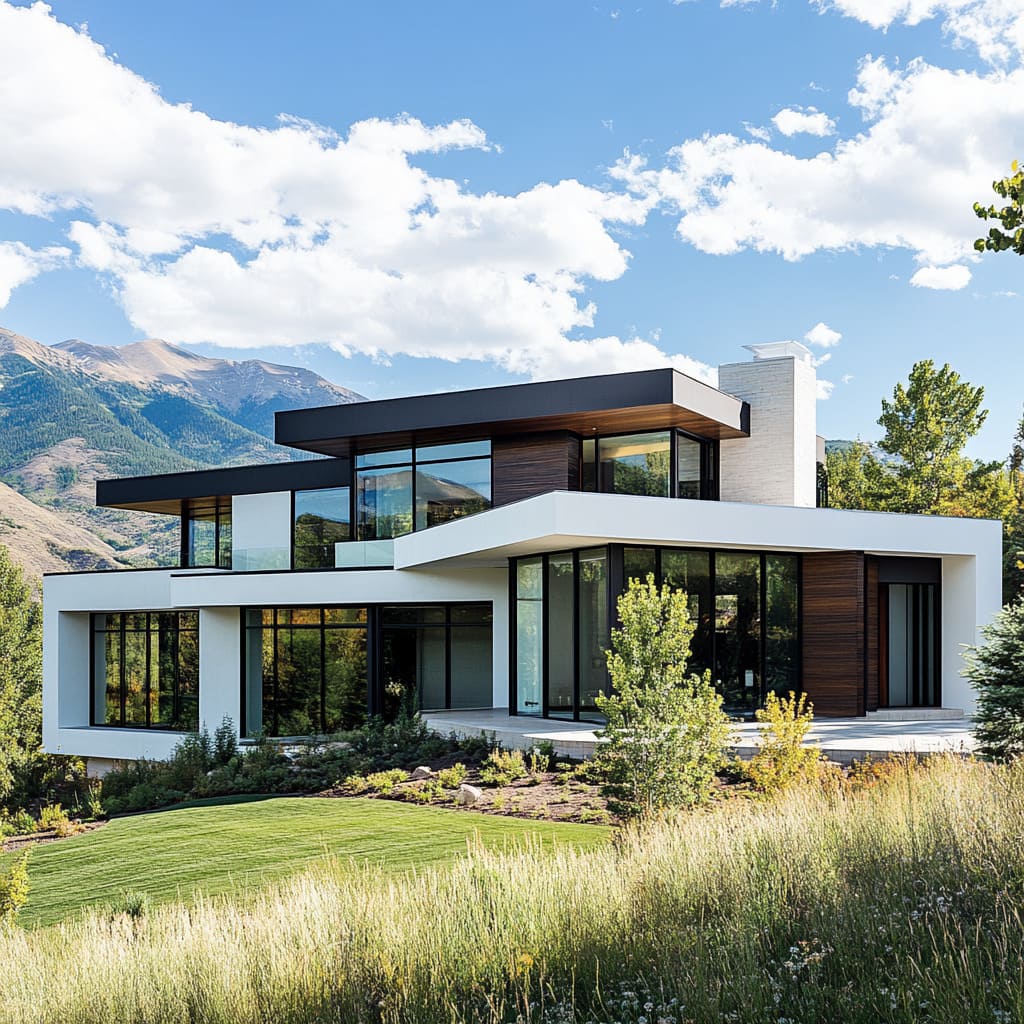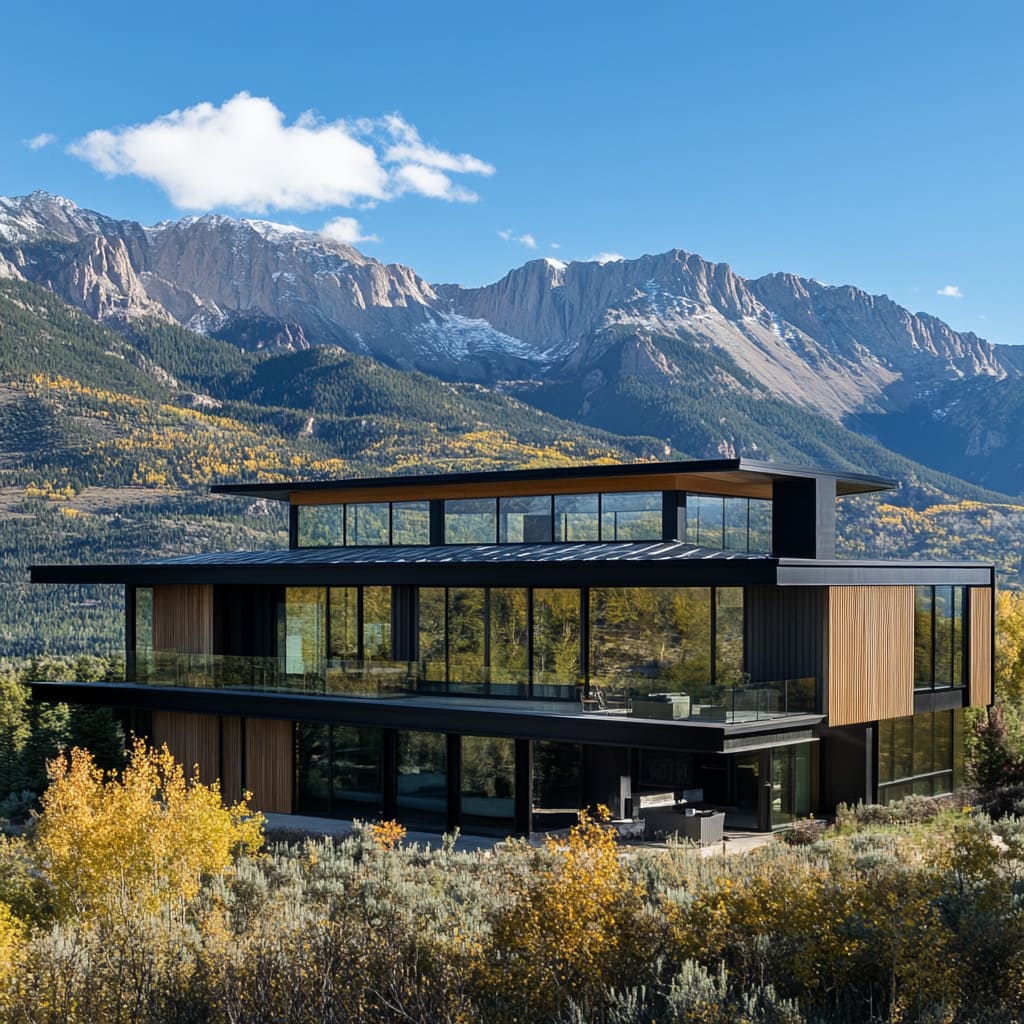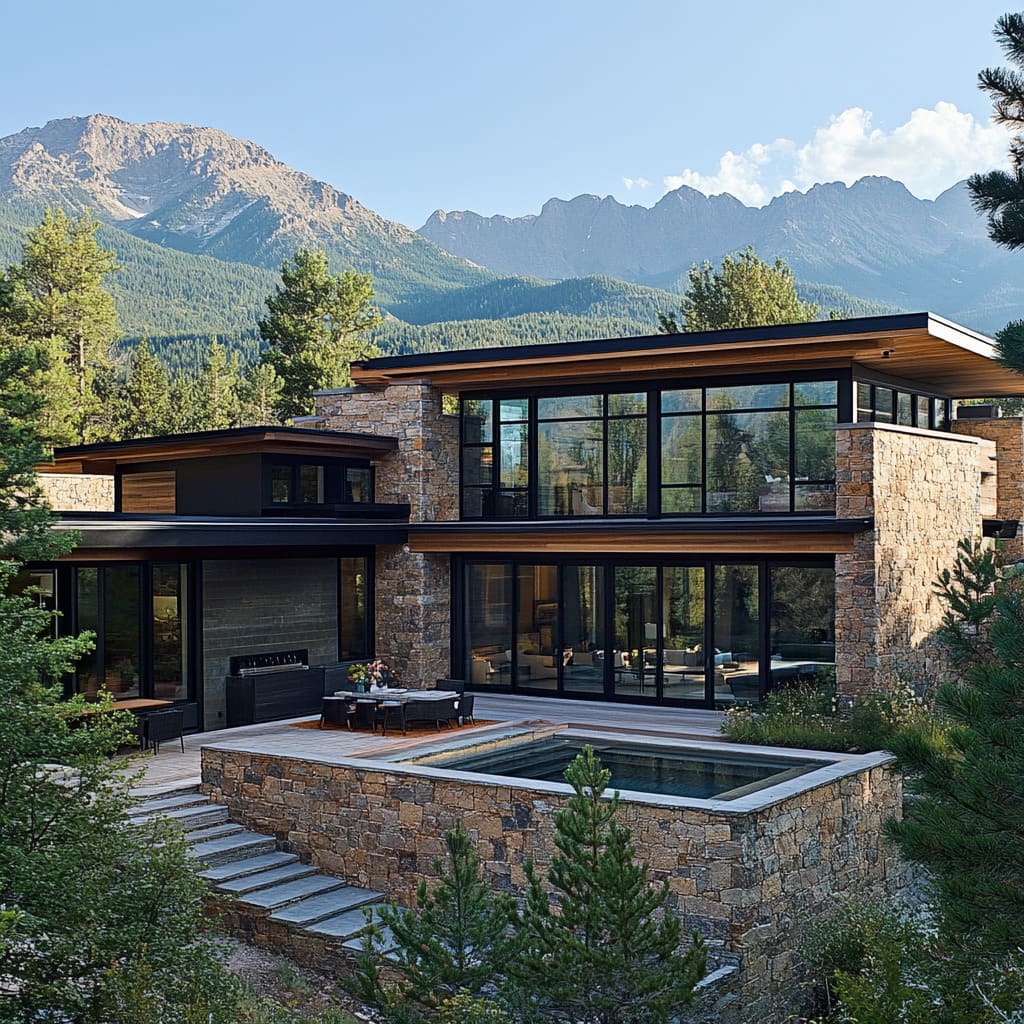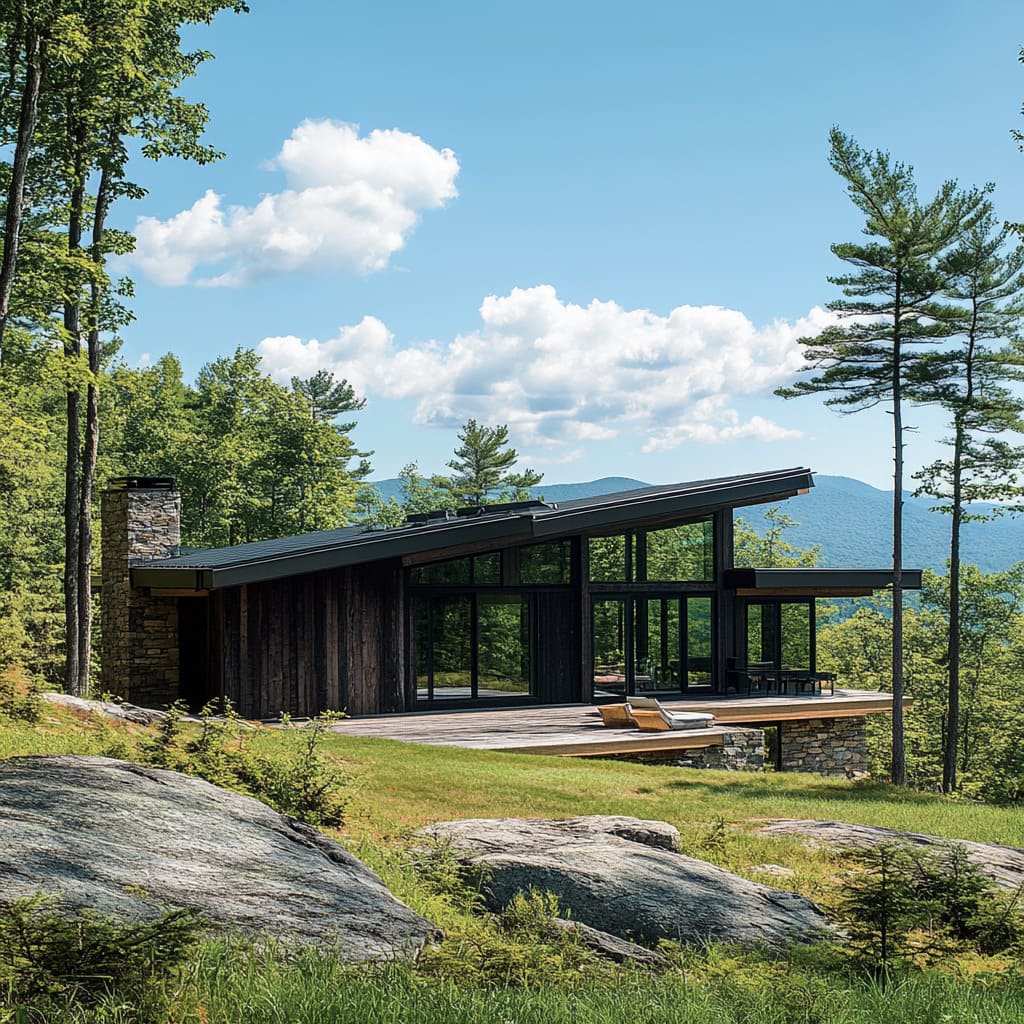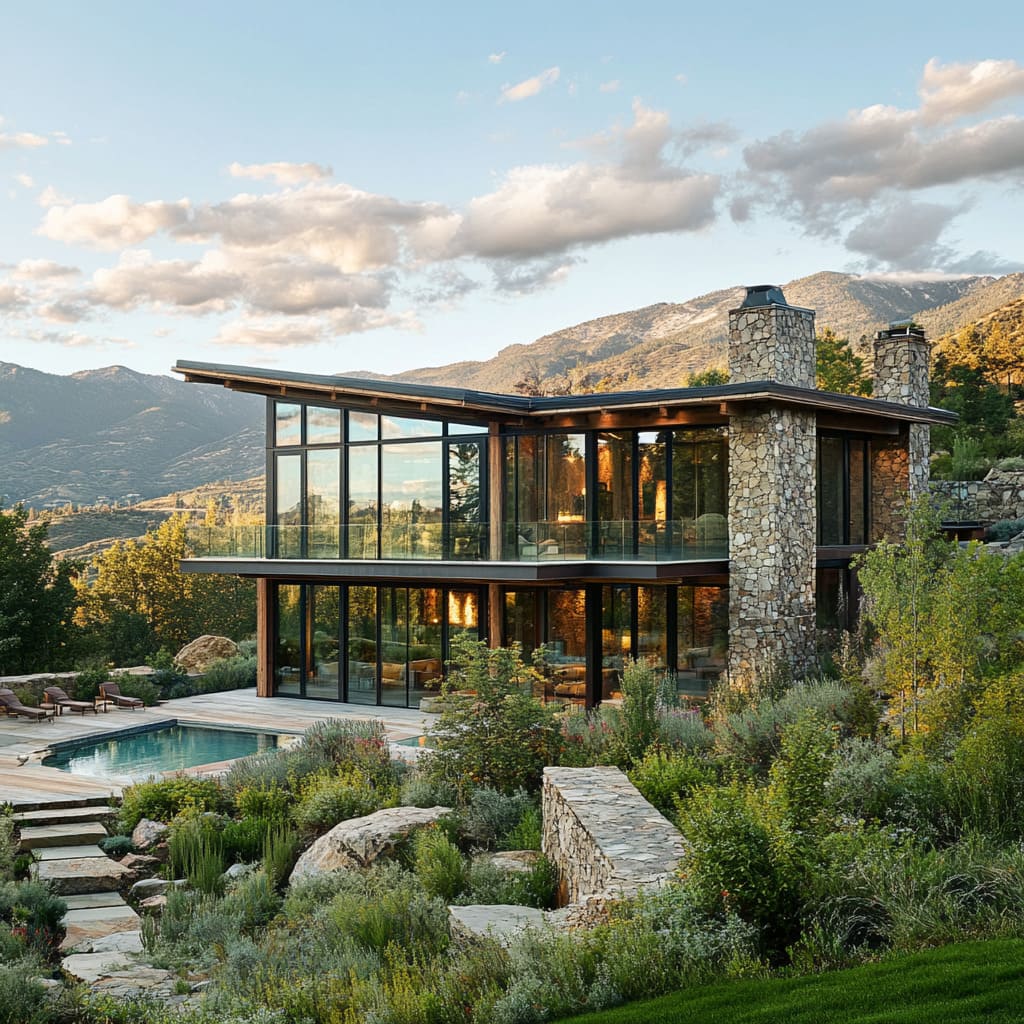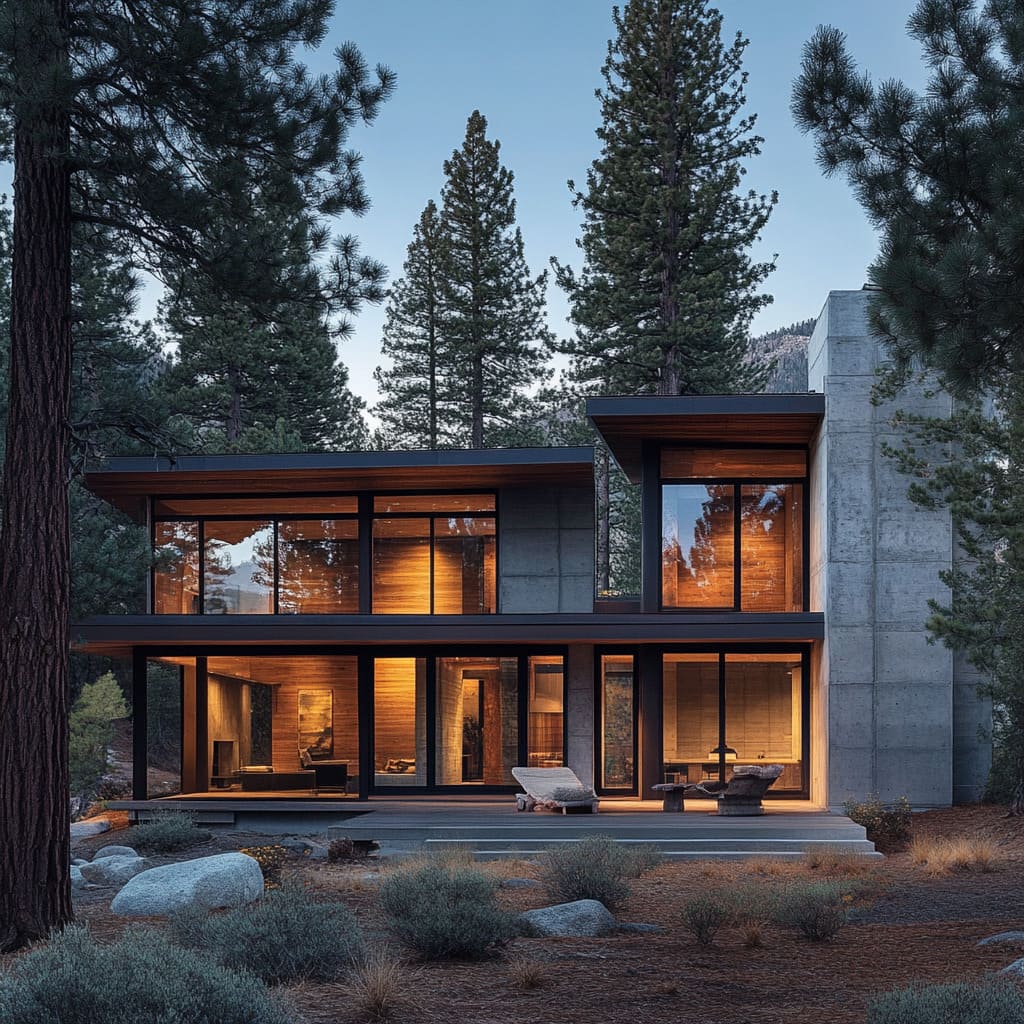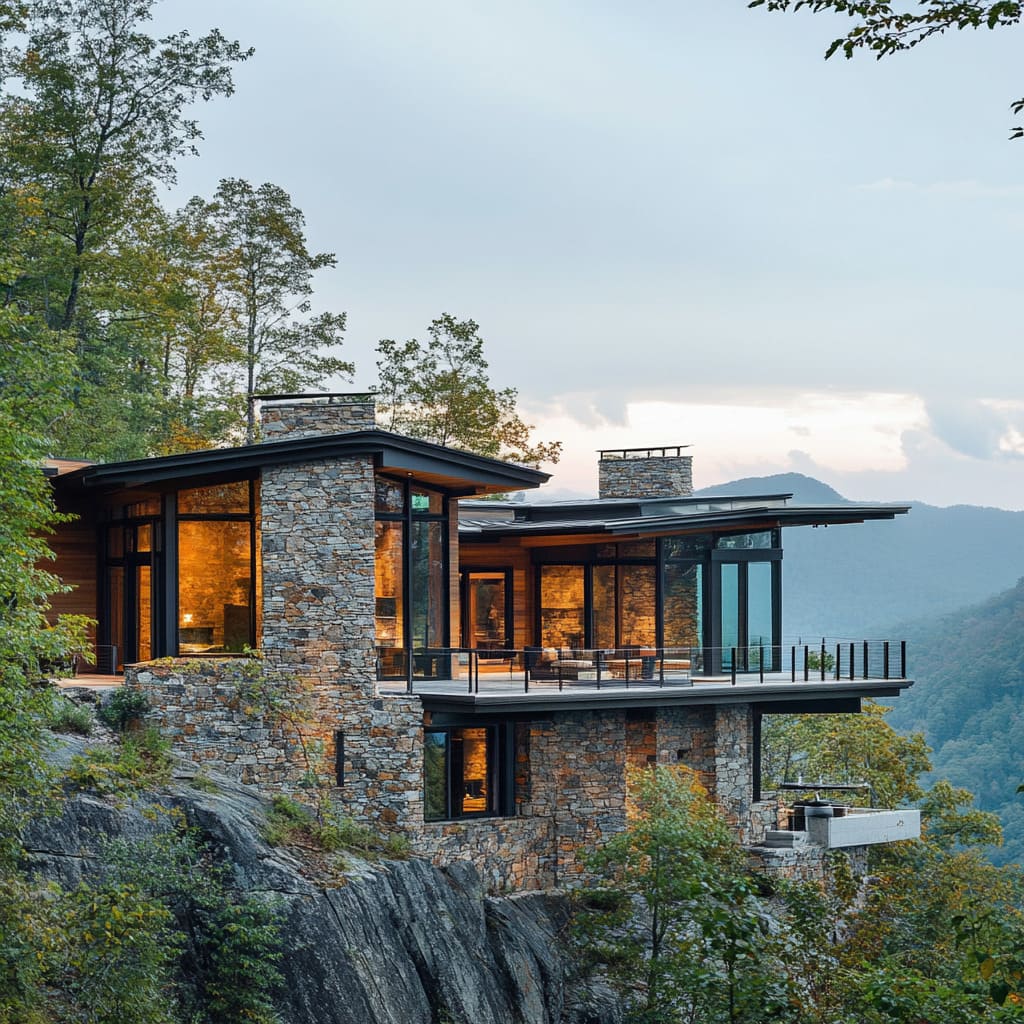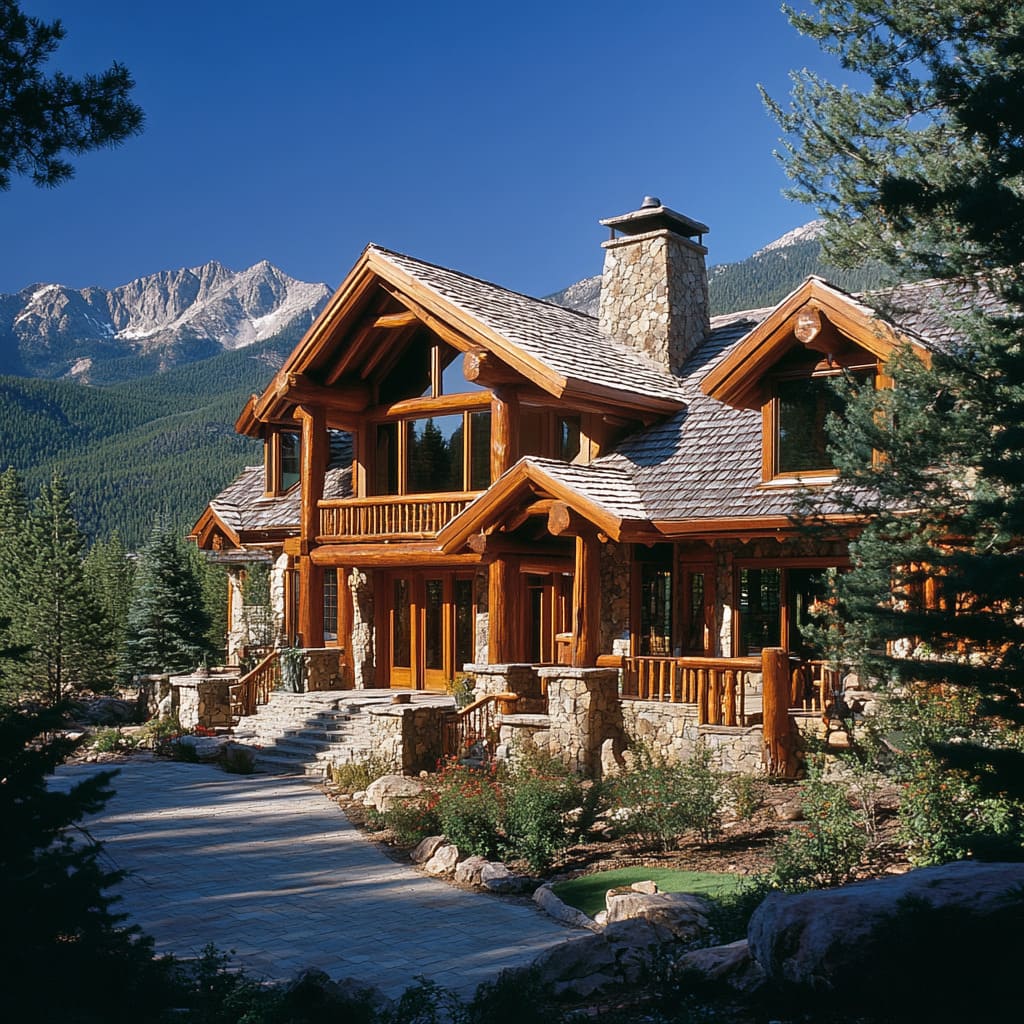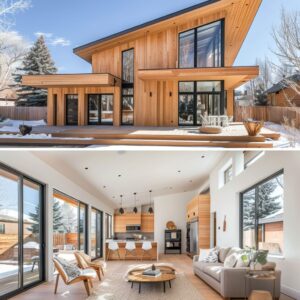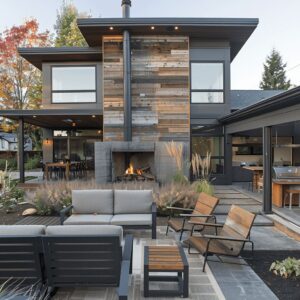Modern mountain homes represent a unique blend of contemporary architecture and the rugged beauty of natural landscapes. These homes are designed to sit harmoniously within their surroundings, often nestled in remote, mountainous regions where the environment plays a crucial role in shaping the overall aesthetic and function of the home.
The concept behind these homes goes beyond mere shelter; they are built to offer an experience that combines the comfort and luxury of modern living with the untamed beauty of the outdoors
The appeal of modern mountain homes lies in their ability to balance sleek, geometric design with the organic elements of nature. These homes often feature expansive windows that open up to breathtaking views, allowing the residents to feel connected to the surrounding landscape
The architecture of these homes is both a reflection of and a response to their environment, with materials chosen not just for their aesthetic appeal but also for their durability and ability to blend with the natural world. In essence, these homes offer a sanctuary where luxury meets the wild, providing a retreat from the hustle and bustle of urban life while maintaining the highest standards of design and comfort
Architectural Elements of Modern Mountain Homes
Sleek and Geometric Design
Modern mountain homes are defined by their clean lines, flat rooflines, and geometric shapes, which stand in contrast to the organic forms of the natural landscapes they inhabit. This design approach emphasizes simplicity and order, creating structures that are visually striking yet harmonious with their surroundings
The use of horizontal lines is particularly important in these designs, as it helps to ground the homes and create a sense of stability and balance. These lines often mirror the natural layers of the landscape, from the flat planes of a valley floor to the sweeping curves of mountain ridges
The design principles of contemporary mountain homes focus on minimalism and functionality, ensuring that every element serves a purpose. This approach results in homes that are not only aesthetically pleasing but also practical and suited to the demands of their environment.
The geometric forms of these homes create a sense of order and cohesion, allowing them to sit comfortably within the often chaotic beauty of mountainous terrain
Material Choices
One of the key aspects of mountain modern home design is the careful selection of materials. These homes are typically constructed using a combination of natural and industrial materials, each chosen for its ability to enhance the home’s connection to the landscape while offering durability and low maintenance
Weathered Steel:
Weathered steel is a popular choice for many luxury mountain home designs, adding an industrial, rugged aesthetic that complements the natural surroundings. As it ages, this material develops a patina that changes in response to the environment, creating a living surface that blends into the earth tones of the surrounding landscape.
The patina provides an earthy appearance that helps the home blend into the rocky terrain, while the durability of steel ensures that the home can withstand harsh weather conditions typical of mountainous regions
Natural Stone:
Natural stone is often used to ground the home within its environment, providing texture, warmth, and a strong visual connection to the earth. Stone walls and foundations are common in mid-century modern mountain homes, where the material is celebrated for its strength and its ability to age gracefully over time.
The use of stone also helps to anchor the home, giving it a sense of permanence and stability that contrasts with the ever-changing natural world outside
Glass:
Extensive use of floor-to-ceiling windows is a hallmark of modern mountain home design. Glass allows for unobstructed views of the surrounding landscape, maximizes natural light, and creates a seamless transition between indoor and outdoor spaces.
These expansive windows serve as a canvas for nature, capturing the ever-changing moods of the mountains, from misty mornings to vibrant sunsets. In addition, the reflective quality of glass helps to integrate the home into its surroundings, making it appear as if the landscape continues through the building itself
Wood Siding:
Wood siding is often used to add warmth and a sense of organic connection to the home’s exterior. The natural grain and color of wood provide a tactile contrast to the sleek surfaces of glass and metal, softening the overall appearance of the home.
When aligned horizontally, wood panels emphasize the linear design of the structure, enhancing the feeling of expansiveness and integration with the landscape. The choice of wood is also practical, as it offers excellent insulation and can be sourced sustainably to minimize environmental impact
Concrete:
Concrete is another essential material in the construction of contemporary mountain homes, valued for its stability, durability, and minimalist aesthetic. Its cool, smooth surfaces contrast with the warmer tones of wood and the rough texture of stone, adding an industrial edge to the design.
Concrete is often used for foundations, retaining walls, and exterior surfaces, providing a solid base that can withstand the forces of nature. In modern design, concrete’s simplicity and versatility allow it to be shaped and finished in ways that complement the home’s overall aesthetic, from polished floors to textured walls
By combining these materials, modern mountain homes create a unique blend of industrial strength and natural beauty, resulting in structures that are both striking and harmonious with their surroundings. These homes are not just places to live; they are thoughtfully designed spaces that offer a deep connection to the landscape, bringing the beauty of the mountains into the everyday experience of their inhabitants
Interior Design and Lighting
Open-Plan Interiors
The interior design of a mountain modern house often embraces an open-plan layout, which seamlessly connects different living areas. This design approach fosters a sense of spaciousness and flow, allowing for easy movement between spaces like the living room, dining area, and kitchen.
By eliminating unnecessary walls and barriers, the interior becomes a unified whole, where each area serves a distinct function while contributing to the overall harmony of the home
One of the most striking features of these interiors is the use of glass to maintain a strong visual connection with the outdoors. Large, uninterrupted windows offer panoramic views of the surrounding landscape, making nature an integral part of the living experience.
This use of glass not only maximizes the available natural light but also ensures that the stunning vistas are visible from virtually every corner of the home. The result is a continuous interaction between the indoor environment and the natural world outside, blurring the boundaries and creating a fluid connection that enhances the living experience
In terms of furnishing, the choices are typically minimalist yet luxurious, complementing the architectural lines of the home. Furniture is often chosen for its simplicity, functionality, and comfort, with an emphasis on high-quality materials and craftsmanship.
The color palette tends to be neutral, with earthy tones that reflect the natural surroundings and allow the architecture and landscape to take center stage. This restrained approach to furnishing creates a serene and cohesive environment, where each piece contributes to the overall aesthetic without overwhelming the space
Lighting
Lighting plays a crucial role in the interior design of a contemporary mountain house, where it is used to enhance both the functionality and atmosphere of the space. The lighting design in these homes is carefully planned to maximize the use of natural light during the day and create a warm, inviting ambiance in the evening.
Natural Lighting:
Large windows and open spaces are key features of modern architecture mountain homes, allowing them to capture as much natural light as possible. During the day, sunlight floods the interior, creating a bright and uplifting atmosphere.
This abundance of natural light not only reduces the need for artificial lighting but also helps to connect the interior with the natural world outside. The orientation of the home and the placement of windows are strategically chosen to take full advantage of the sun’s path, ensuring that the living spaces are bathed in light throughout the day
Artificial Lighting:
As evening falls, artificial lighting takes on the task of creating a cozy and inviting atmosphere. Warm interior lighting, often achieved through the use of soft, dimmable fixtures, ensures that the home remains comfortable and welcoming after dark.
The lighting is typically designed to highlight architectural features, art pieces, and textures within the home, adding depth and dimension to the spaces.
Outdoor lighting is also a key consideration in modern homes in the mountains. Subtle lighting is used to illuminate pathways, patios, and landscaping, enhancing the home’s exterior without overpowering the natural beauty of the surroundings.
The goal is to create a balance where the lighting enhances the experience of being in the home’s outdoor spaces, allowing residents to enjoy the stunning views and fresh air long after the sun has set
Sustainable and Energy-Efficient Features
Solar Panels
Sustainability is a significant focus in the design of a modern home in mountain environments. One of the most common features in these homes is the integration of solar panels.
These panels are often strategically placed on flat or slightly sloped roofs to capture maximum sunlight without compromising the home’s sleek design. The use of solar energy not only reduces the home’s carbon footprint but also provides a reliable source of power in remote settings where traditional energy sources might be limited.
The inclusion of solar panels aligns with the broader goal of minimizing the environmental impact of these homes. By using renewable energy, homeowners can enjoy modern comforts while remaining conscious of their ecological footprint.
This approach to energy efficiency is particularly important in remote, natural settings, where preserving the surrounding environment is a priority
Material Sustainability
Material choice is another critical aspect of sustainability in contemporary mountain homes. These homes often incorporate locally sourced, durable materials such as stone and wood, which not only enhance the aesthetic appeal but also reduce transportation-related environmental impacts.
Local stone is used for foundations, walls, and landscaping, providing a natural connection to the surrounding terrain. Wood, often reclaimed or sustainably harvested, adds warmth to the design while being a renewable resource
The use of weathered steel and concrete also contributes to the sustainability of modern mountain homes. Weathered steel, with its long lifespan and minimal maintenance requirements, is both durable and aesthetically pleasing.
Its natural patina develops over time, reducing the need for additional finishes or coatings. Concrete, used for its strength and stability, is another material that offers longevity with minimal environmental impact.
These materials not only withstand the harsh mountain climate but also contribute to the overall energy efficiency of the home by providing excellent insulation and thermal mass
Challenges and Considerations
Designing for Remote Locations
Building a mountain modern house in a remote location presents unique challenges that require careful consideration. These homes are often situated in rugged, isolated areas where access to construction materials and labor can be limited.
As a result, the design and construction process must be meticulously planned to ensure that all necessary resources are available when needed. This includes selecting materials that are not only aesthetically pleasing but also durable and able to withstand the local climate
Another challenge is balancing the desire for modern amenities with the need to respect and preserve the natural setting. This requires thoughtful design choices that minimize the environmental impact of the home while still providing the comforts and conveniences of modern living.
For example, integrating infrastructure such as water and energy systems in a way that does not disrupt the surrounding ecosystem is crucial
Weather and Environmental Conditions
Mountain climates are known for their unpredictability and harsh conditions, which can include extreme temperatures, heavy snowfall, and strong winds. These factors must be taken into account when designing a contemporary mountain house.
The materials chosen for construction need to be resilient and able to withstand these challenges over time
Cantilevers and overhangs are commonly incorporated into the design to provide protection from the elements. These architectural features help to shield the home from direct sunlight during the summer months and provide cover from snow and rain.
Additionally, the orientation of the home is often planned to optimize passive solar heating in the winter while minimizing heat gain in the summer. This careful attention to detail ensures that the home remains comfortable year-round, regardless of the weather conditions outside
The unique combination of modern design, sustainable practices, and thoughtful consideration of environmental challenges makes these modern homes in the mountains not only visually stunning but also practical and environmentally responsible. They serve as a testament to the possibilities of blending cutting-edge architecture with the timeless beauty of nature, creating homes that are as functional as they are beautiful
Conclusion
Modern mountain homes embody the perfect fusion of sleek, contemporary design with the untamed beauty of rugged landscapes. These homes are more than just structures; they are carefully crafted environments where architecture and nature coexist in harmony
The clean lines and geometric shapes of modern mountain house design stand in stark contrast to the organic forms of the surrounding terrain, creating a dynamic interplay between the built and natural worlds. This design philosophy not only enhances the aesthetic appeal of the home but also ensures that it integrates seamlessly with its environment, offering residents an experience that is both luxurious and deeply connected to nature.
The enduring appeal of these homes lies in their ability to provide a sanctuary from the fast pace of modern life. A luxury modern mountain house offers more than just comfort; it provides a space where one can reconnect with the natural world.
The expansive use of glass in these homes ensures that nature is never out of sight, while the use of natural materials like stone and wood fosters a sense of warmth and grounding. For those who seek both opulence and a deep connection with the outdoors, modern mountain homes are the ideal retreat
As we look to the future of modern house in the mountain design, sustainability and evolving architectural trends will continue to shape these spaces. The integration of sustainable materials and energy-efficient technologies, such as solar panels and locally sourced stone, reflects a growing awareness of the need to protect and preserve our natural environment.
At the same time, the design of these homes will likely continue to evolve, embracing new materials and techniques that enhance both the aesthetic and functional aspects of mountain living
In the coming years, we may see the rise of even more innovative designs, where technology and nature are woven together in new and exciting ways. The concept of the modern mountain mansion, for example, may expand to include smart home features that enhance comfort and efficiency while maintaining a low environmental footprint
Ultimately, the future of mountain home design will be defined by a balance between luxury and sustainability, where homes not only reflect the beauty of their surroundings but also contribute to the preservation of those landscapes for future generations. These homes will continue to offer a unique blend of modern living and natural beauty, making them a timeless choice for those who value both style and a deep connection to the world around them

